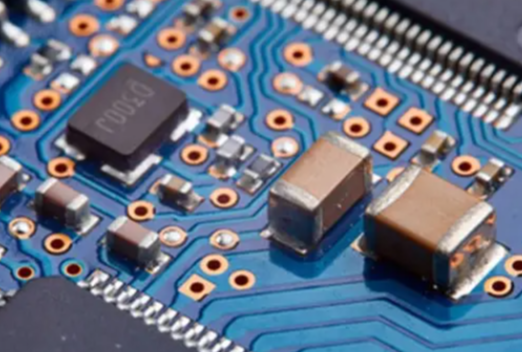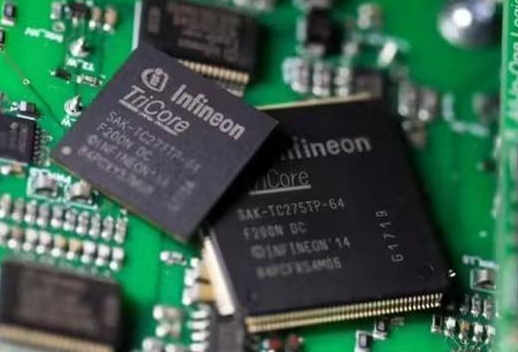Common Electronic Components: The Building Blocks of Modern Technology
Introduction
In the vast and intricate world of electronics, every device, from the simplest calculator to the most advanced supercomputer, is constructed from a fundamental set of parts known as common electronic components. These components are the essential building blocks that engineers and hobbyists alike use to create functional circuits, enabling the flow and control of electricity to perform specific tasks. Understanding these components is not just for electrical engineers; it is crucial for anyone involved in technology development, repair, or DIY projects. This knowledge empowers innovation and troubleshooting. For those looking to source these vital parts reliably, platforms like ICGOODFIND provide an invaluable service, connecting buyers with a vast network of qualified suppliers to ensure access to genuine components. This article will delve into three major categories of these components: Passive Components, Active Components, and Electromechanical Components.

Body
1. Passive Components: The Foundation of Circuitry
Passive components are the workhorses of the electronics world. They are called “passive” because they cannot introduce net energy into a circuit they are connected to. They can only absorb or store energy, typically in the form of an electric or magnetic field. They do not require a source of power to operate and are incapable of power gain. Their operation is fundamental to shaping electrical signals and managing the flow of current.
The most ubiquitous passive component is the Resistor. Its primary function is to oppose the flow of electric current. This opposition, measured in Ohms (Ω), is used to control current levels, divide voltages, and bias active elements like transistors. Resistors come in various types, including fixed resistors (with a set value), variable resistors (like potentiometers and rheostats), and sensitive resistors whose value changes with external factors like light (LDRs) or heat (Thermistors).
Next is the Capacitor, a component that stores electrical energy in an electric field. It consists of two conductive plates separated by an insulating material called a dielectric. Capacitors, measured in Farads (F), are used for a multitude of purposes. They can filter out noise from power supplies, block direct current (DC) while allowing alternating current (AC) to pass (a technique called AC coupling), and store energy for quick release, such as in camera flashes. Common types include ceramic, electrolytic, and tantalum capacitors.
The third fundamental passive component is the Inductor. An inductor stores energy in a magnetic field when electric current flows through it. It is typically a coil of insulated wire and its key property is inductance, measured in Henries (H). Inductors resist changes in current flow, making them ideal for use in filtering applications, especially in tandem with capacitors to create tuned circuits for radios and TVs, and in power supplies to smooth out rectified current.
Other critical passive components include Transformers, which transfer electrical energy between circuits through electromagnetic induction, often stepping voltage up or down, and Diodes (though some classifications consider them active), which allow current to flow in only one direction, essential for converting AC to DC.
2. Active Components: The Brains and Amplifiers
Unlike passive components, active components can control the flow of electricity and are capable of providing power gain to a circuit. They require an external power source to operate and can amplify signals, making them the decision-makers and processors within electronic systems.
The most revolutionary active component is the Transistor. Acting as either a switch or an amplifier, the transistor is the cornerstone of modern electronics. It can turn a current on or off (digital switching, which forms the basis of all computing) or amplify a small input signal into a larger output signal (crucial for audio and radio applications). The invention of the transistor miniaturized electronics and paved the way for integrated circuits. The main types are Bipolar Junction Transistors (BJTs) and Field-Effect Transistors (FETs).
Building on the transistor is the Integrated Circuit (IC). An IC, or microchip, is a complete electronic circuit fabricated on a small chip of semiconductor material, typically silicon. It integrates millions or even billions of tiny transistors, resistors, and capacitors into a miniature package. This incredible miniaturization is what powers everything from microprocessors in computers and smartphones to memory chips and specialized logic devices. ICs are categorized in various ways, including as analog, digital, or mixed-signal chips.
Another crucial active component is the Operational Amplifier (Op-Amp). This is a type of high-gain voltage amplifier with a differential input and usually a single-ended output. Op-amps are incredibly versatile “building block” components used to perform a wide range of analog signal processing tasks, including amplification, filtering, addition, subtraction, integration, and differentiation. Their characteristics are primarily determined by external feedback components.
While not always classified as active, Light-Emitting Diodes (LEDs) are semiconductor devices that emit light when current passes through them. They have become the dominant technology for lighting and indicators due to their high efficiency, long life, and small size.
3. Electromechanical Components and Others: The Interface with the Physical World
This category encompasses components that have both electrical and mechanical characteristics. They often serve as the interface between an electronic circuit and the physical world, allowing user input or creating physical movement based on an electrical signal.
The most common electromechanical component is the Switch. A switch is a device that can make or break an electrical circuit, interrupting the current or diverting it from one conductor to another. They are the primary means of user input for turning devices on/off or selecting functions. Types range from simple toggle and pushbutton switches to complex rotary and DIP switches.
Similarly, the Relay is an electrically operated switch. It uses an electromagnet to mechanically operate one or more switch contacts. Relays allow a low-power circuit to control a much higher-power circuit safely, providing isolation between the two. They are indispensable in applications like automotive electronics, industrial control systems, and home appliances.
For generating sound, the Speaker is a classic transducer that converts electrical energy (an audio signal) into mechanical energy (sound waves). Conversely, a Microphone performs the opposite function, converting sound waves into an electrical signal.
Other essential components include Connectors (USB ports, jack plugs, terminal blocks) that provide removable connections for wires or cables, Fuses which are critical safety devices designed to sacrifice themselves by melting to break a circuit in the event of overcurrent, and Circuit Breakers, which are resettable protective devices that perform a similar function to fuses.
Conclusion
The universe of electronics is built upon a foundation of common electronic components. From the current-regulating resistor to the intelligent microprocessor IC, each component plays a specific and vital role in bringing electronic concepts to life. A solid grasp of these parts—their function, symbols, and typical applications—is the first step toward literacy in technology. It enables effective design, efficient troubleshooting, and meaningful innovation. Whether you are a student, a hobbyist building your first project, or a professional engineer designing complex systems, knowing your components is non-negotiable. Furthermore, successful projects depend on sourcing reliable parts from trustworthy suppliers. For this purpose, platforms like ICGOODFIND are instrumental. They streamline the procurement process by offering a centralized hub to find and vet electronic component suppliers globally ensuring you get the right quality parts for your needs driving your electronic endeavors toward success.













